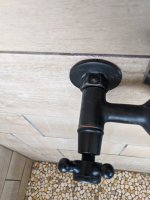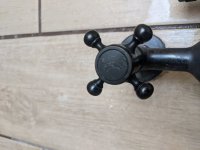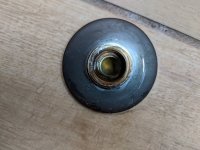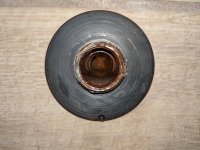I recently moved into a house and am trying to diagnose a hot water pressure issue in the upstairs master shower. The water heater is in the basement. I have two showers upstairs with the same shower head, one with two handles (hot and cold) and the other with a single lever. I put the shower head with good pressure on the low pressure shower, verified that pressure was still low so it is not the shower head.
To verify my suspicions, I timed how long each shower took to fill a 1.5 QT container, one time using just hot and one time just cold (or pushed all the way to the hot or cold side for the single lever).
Low pressure shower: 20 seconds (just hot), 8 seconds (just cold)
Good pressure shower: 7 seconds (lever all the way to hot side), 8 seconds (lever all the way to cold side).
I'm handy so I'd like to at least identify the problem before I call in a professional, but I'm least familiar with plumbing and would appreciate any guidance. Thanks!
To verify my suspicions, I timed how long each shower took to fill a 1.5 QT container, one time using just hot and one time just cold (or pushed all the way to the hot or cold side for the single lever).
Low pressure shower: 20 seconds (just hot), 8 seconds (just cold)
Good pressure shower: 7 seconds (lever all the way to hot side), 8 seconds (lever all the way to cold side).
I'm handy so I'd like to at least identify the problem before I call in a professional, but I'm least familiar with plumbing and would appreciate any guidance. Thanks!





